Naked ladies bring zip to late summer garden
Donald McClure | Sep 27, 2010 | Comments 3
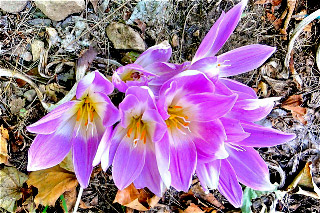
Flimsy finery of the fall crocus (or Naked Ladies) can brighten any late season garden. Donald McClure photo
They are so secretive and so beguiling that they always seem a surprise when they suddenly burst through the hard, dry soil of late summer in their flimsy finery. We call them naked ladies — but their official designation is Colchicum or fall crocus or meadow saffron. Walk out into the diminishing garden and suddenly the eye is startled by a display of gorgeous, delicate, leafless colchicum’s that have emerged as a new breath of fresh air to the display.
The “Naked Lady” tag is perfectly logical. These flowers arrive on the scene with absolutely no foliage. They get all of that leaf action over in the spring and vanish. Flowers will not appear until late summer-early fall — and this time what you see is what you get.
They truly give a sensuous, wonderful boost to your beds. And now they have them in a variety of colours and types. If you see them, buy them and get them planted. Trust me you will not be embarrassed.
* * *
One of my gardening buddies — who incidentally was a master gardener before he took the course, has been at it again. Douglas Quinn, who gardens with wife Carol over near Hillier, has again grown a lotus flower in his yard. The exotic Lotus is part of a genus of 150 species of annual and perennials. They are mostly from the northern hemisphere and many species like well-drained and full sun. Like Doug’s specimen they are also excruciatingly beautiful.
* * *
Changing climate conditions in Ontario has brought with it changing patterns of activity from some of our insect families. This year we encountered a different butterfly species on our lot which had me pouring over my identification charts for verification. Sent a photo over to expert David Bree in Bloomfield. His call: a Northern Crescent.
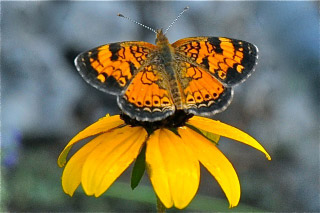
Like a rich piece of tapestry the striking Northern Crescent which dropped into our Bloomfield garden recently. Donald McClure photo
“This is a fairly common species in the area but I don’t recall seeing it in town,” he said. “There is another Crescent that can be found here – the Pearl Crescent and they can be very difficult to separate from the Northern and in many cases I don’t even try. Northern generally have a more open orange area in the back wing.” Thank you David.
* * *
Last year we started feeding our neighborhood Blue Jays peanuts in the shell each morning. When we ended the practice in late April we had nine regulars that would arrive with a whistle. Feeling a little of the cooler night air I suppose, one returned this week and started to squawk at us over our breakfast. I opened a fresh bag of peanuts and dropped some on the verandah and hid a few others in a metal wall hanger the way we did last winter. Three jays returned shortly and the first thing they did was survey the wall rack to see if we had hidden any there. It was nearly five months since they had last played this game — but they remembered it.
And another thing: If Judy and I are at the window they will come right up to the glass for peanuts. If a stranger is there they will avoid coming close. Crows are supposed to be superior creatures in memory and face recognition (ie. the CBC program on The Murder of Crows) but in my book the Jays must come a close second.
* * *
Neigbour Ann Lafave sends along a picture of a rose which once belonged to her friend Meralyn’s mother in Oregon. Meralyn describes it “as acting like a Peace Rose. Changing colors like that. It’s small, thin-stemmed, but it usually has only one blossom on each stem, multiple stems. Its about 3-4′ tall, depending on how much I prune it. It blooms all summer, beginning in the spring actually, and into the fall”.
Poured over my reference books today, and thought it had characteristics of a rugosa but couldn’t come up with a match. My next thought was could this be Marguerte Hilling a sport of the shrub rose Nevada. Not a match I’m afraid. Anyone got an idea?
* * *
Landscape architect, seed collector, and naturalist David Tomlinson and writer wife Deirdre journeyed to the County from their storied Merlin’s Hollow garden site in Aurora this week and brought us a unique gift of miniature oranges harvested from their 35-year-old orange tree. We were delighted. Each tiny orange was exquisitely perfect and Judy was even presented with a recipe to get the maximum benefit preparing them for consumption.
Filed Under: Donald McClure • Uncategorized
About the Author: He can tickle your funny bone or tug at your heart strings. County people may know him as a chronicler of everything that happens (or should happen) in the garden, but his interests stretch across the natural world. His unique sense of observation takes in a wide expanse of living and may even point out some truths about our own condition as managers of the world around us. With Loyalist antecedents in his family tree his roots go deep into the Ontario countryside.



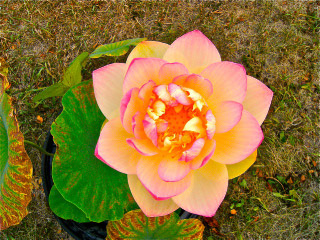
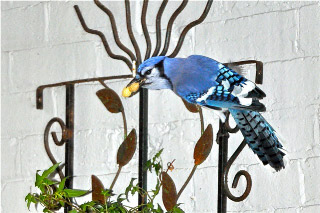
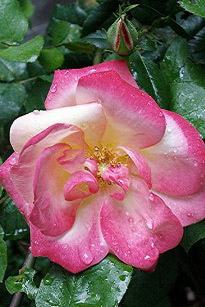
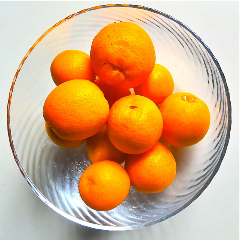





























Thanks for the advice Donald! I will try your suggestions and let you know in the spring!!
Thank for your kind comments Dawn!
Some gardeners have real problem with rodent damage to spring bulbs. Others sail by without a problem.
Since it is not always practical to plant bulbs that the squirrels do not like (they love tulips and crocuses) here are some techniques to use to protect all of your spring bulbs:
Plant your bulbs a bit deeper than normally recommended — squirrels tend to lose interest if there is a lot of digging involved. Most of their depredations are committed on newly disturbed ground.
Bulbs are most vulnerable right after planting. Be sure to clean up all of the plant debris from the site including the removal of loose tulip bulb husks. Then water down the site. Squirrels will avoid muddy surfaces.
Some gardeners have employed a layer of fresh cedar mulch over the newly planted site which seems to discourage all types of rodents and of course the pungent cedar smell covers the scent of the bulbs themselves.
Chicken wire (about one inch mesh) laid over the top of the bed is a strong deterent, but you can also use a layer of ground cover clothe, newspapers or even old lumber or plywood to cover the site — but be sure to remove after the ground is frozen so your spring sprouts can get through.
It goes without saying that putting out a bit of food for the squirrels can be a distracting element also….
Good luck! Don’t give up on your bulbs.
Hello Donald! I love your blog! I bought a house 10 years ago and every year I feed a new generation of Blue Jays peanuts! Their parents bring them to me and we bond – they have no fear and are fiercely devoted to their family! They sing to me mostly rather than the typical call to let me know they are there!
I am seeking some gardening advice! Almost all of my spring bulbs have already been dug up by the squirells! Can you recommend any for full sun and shade that they won’t eat?
Thanks so much!